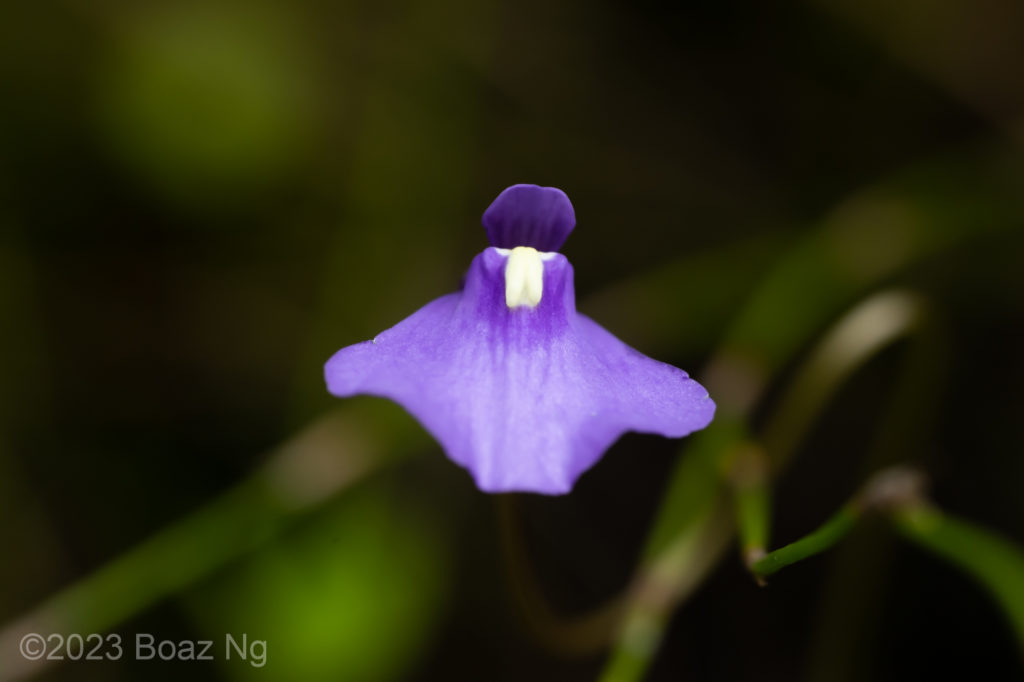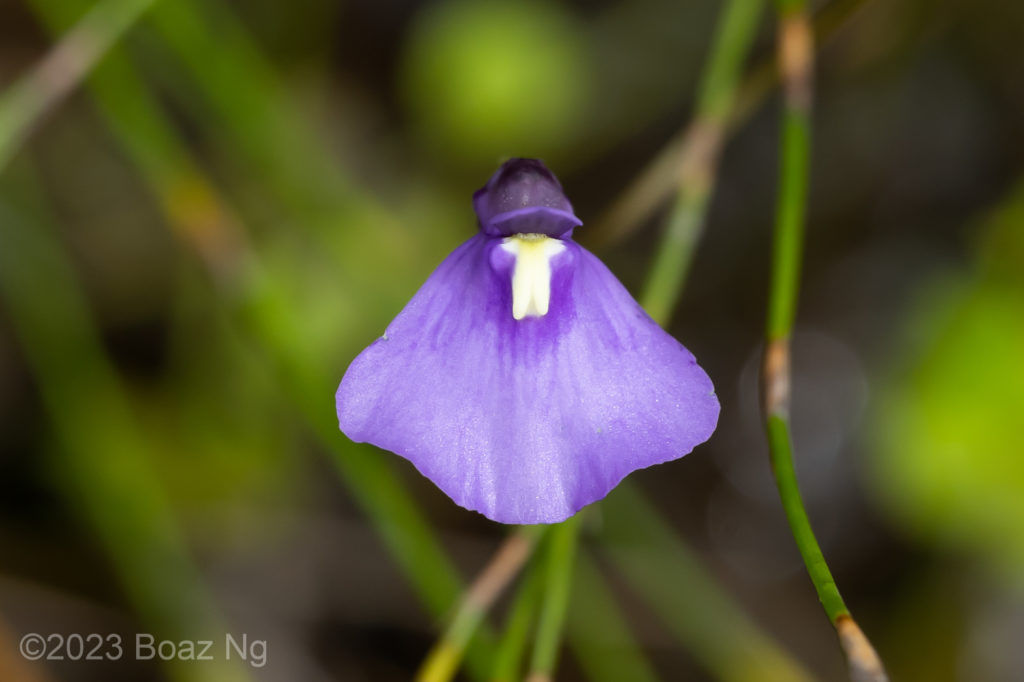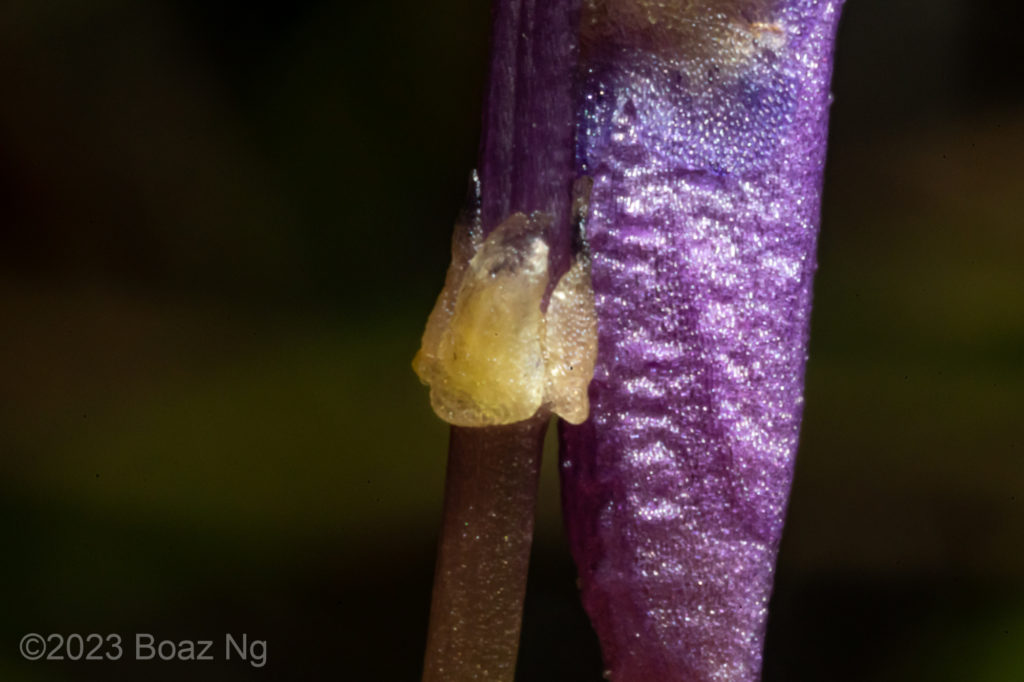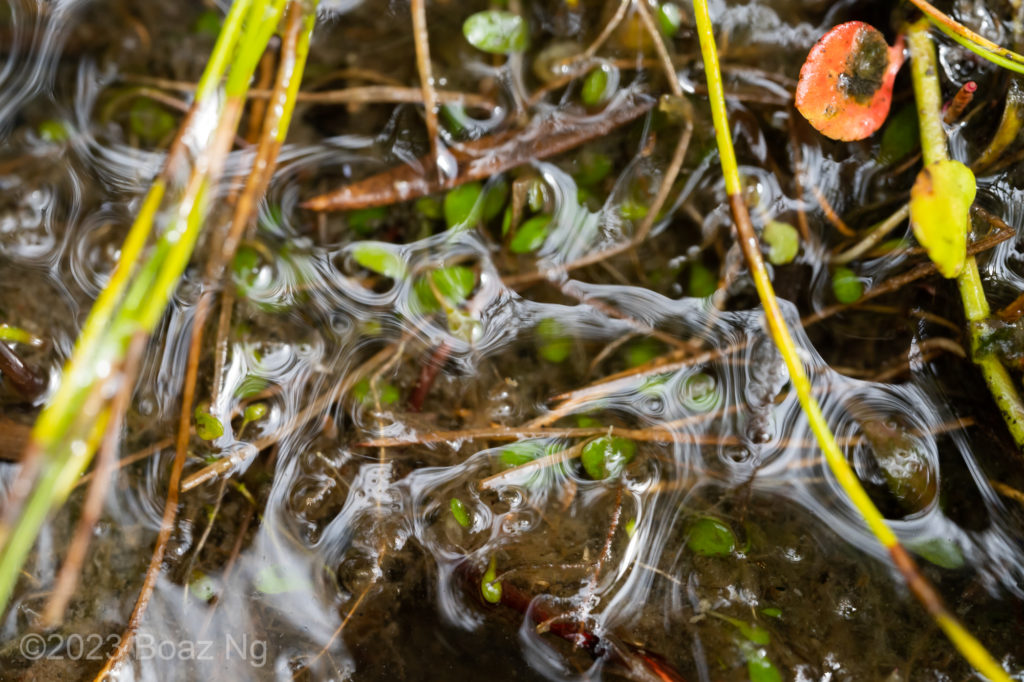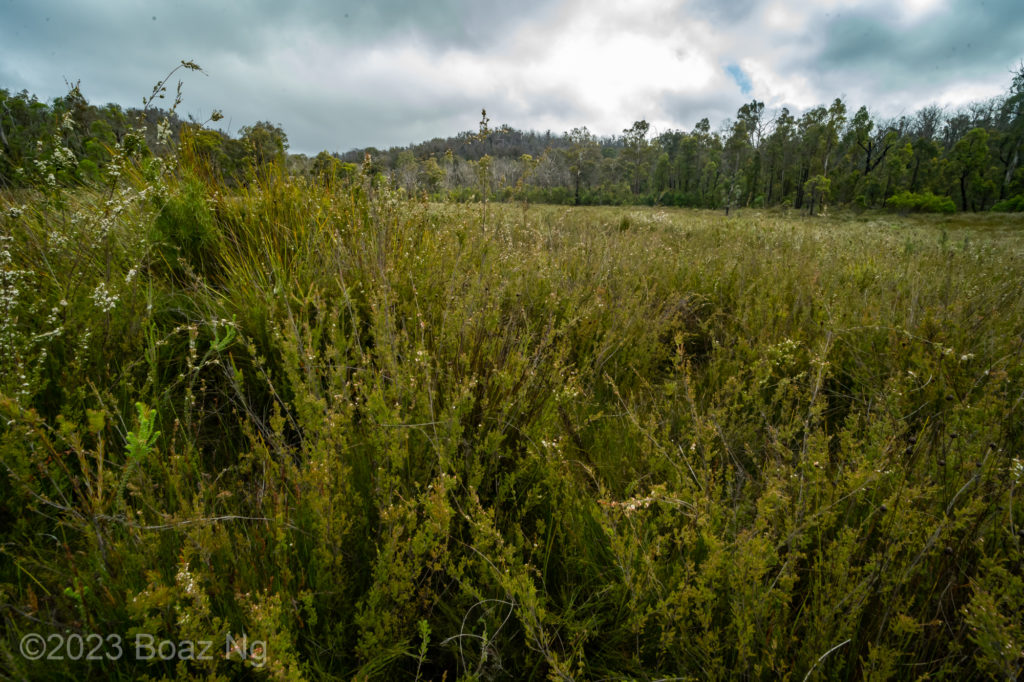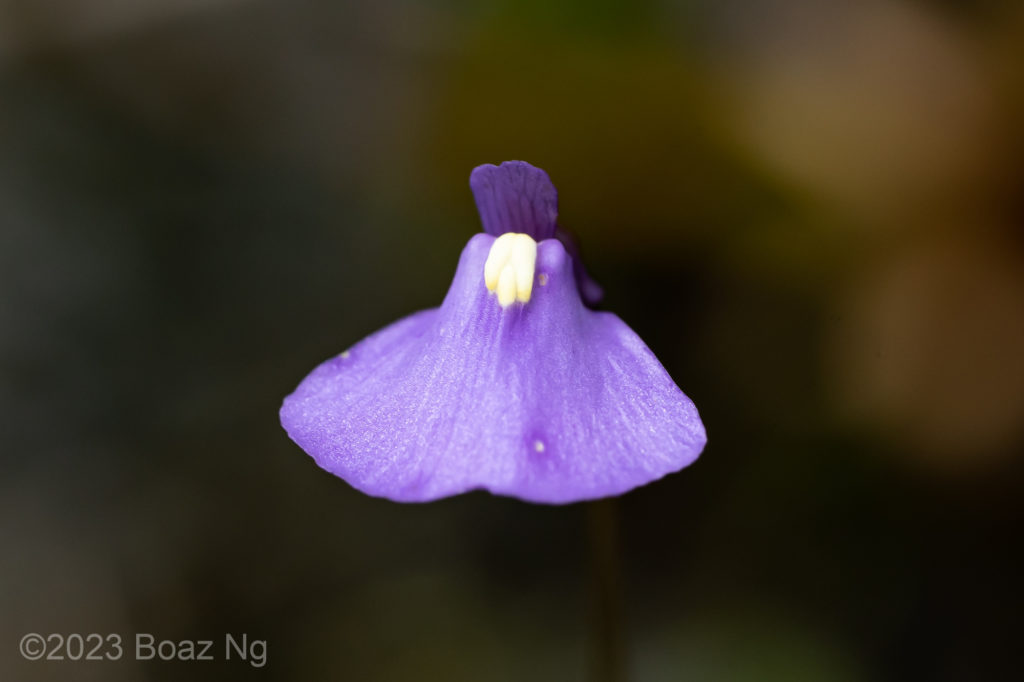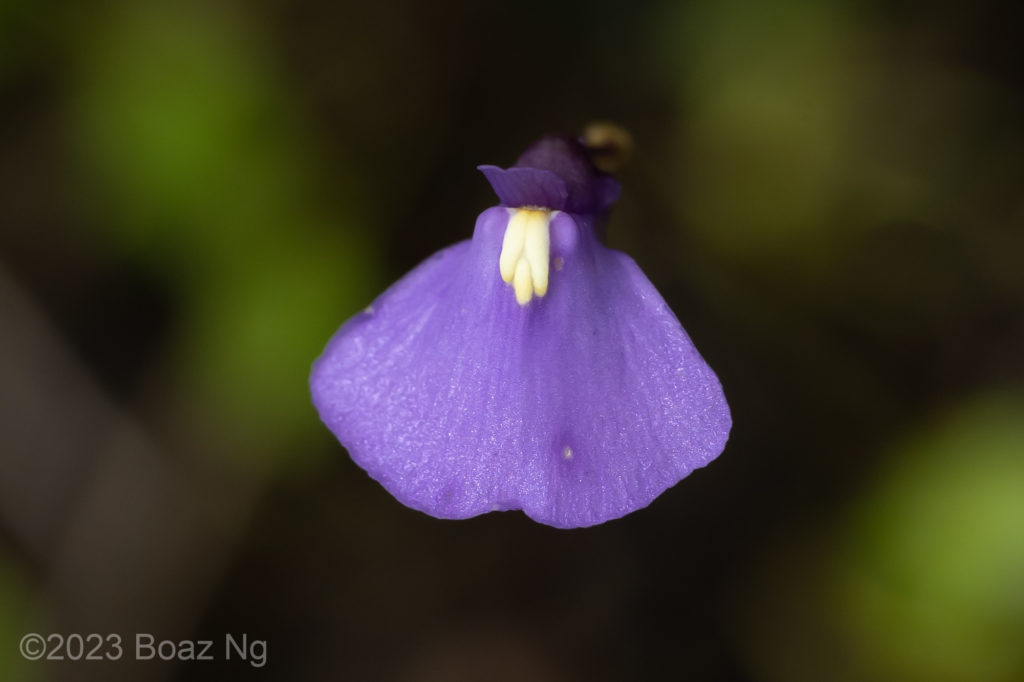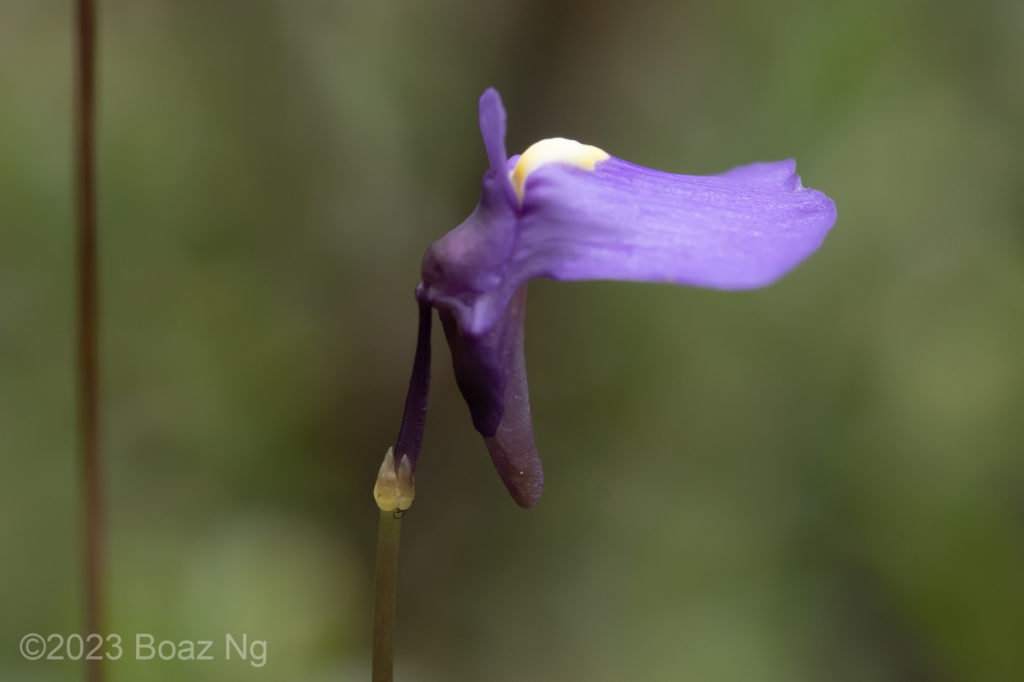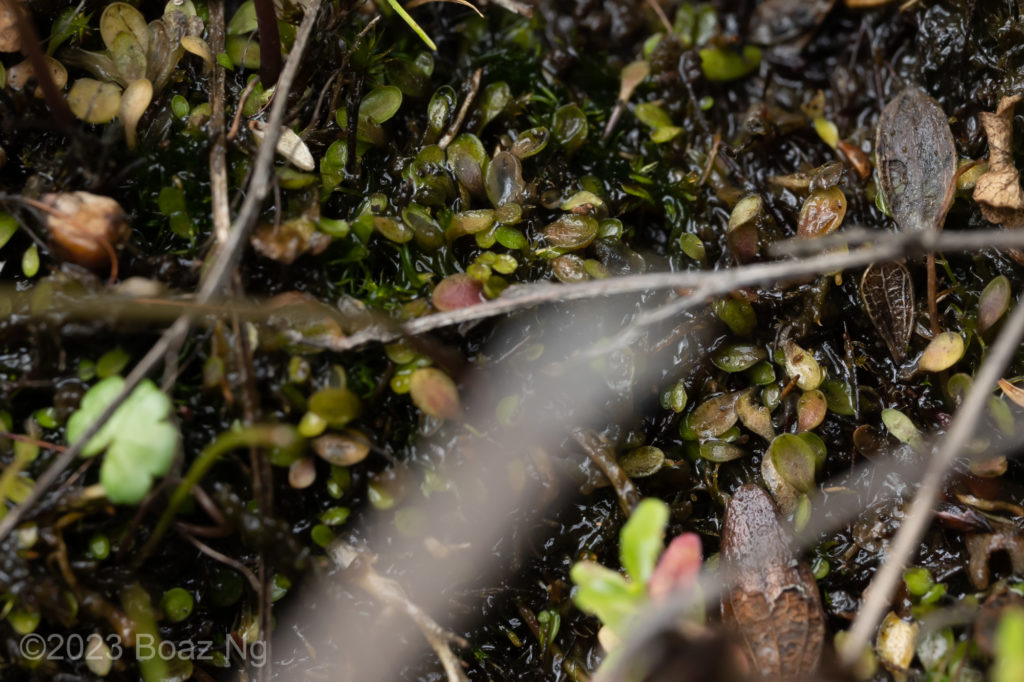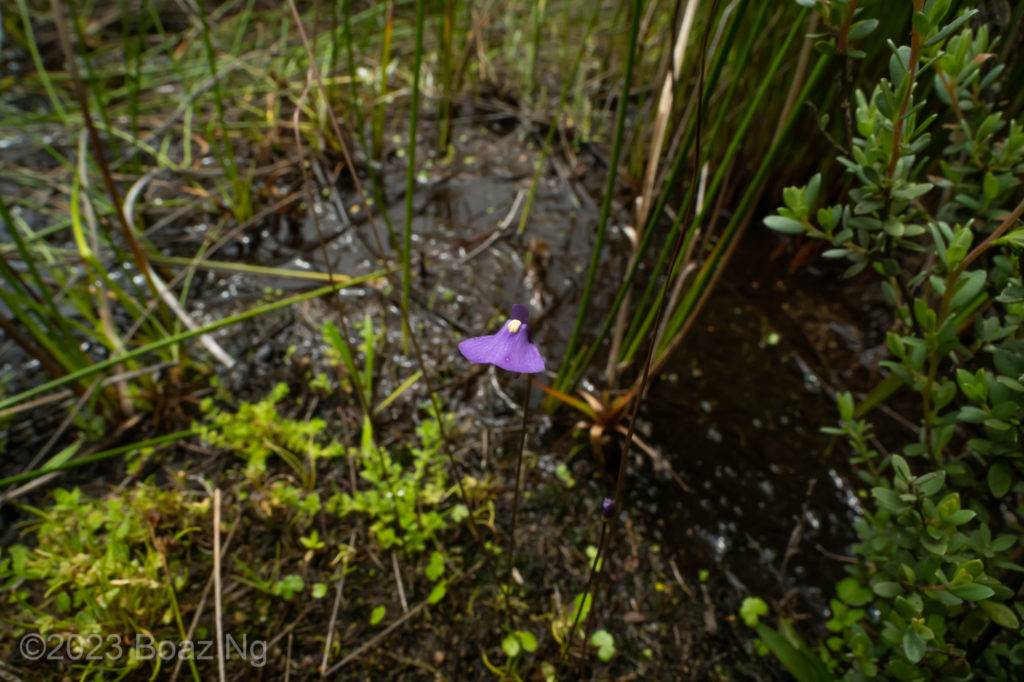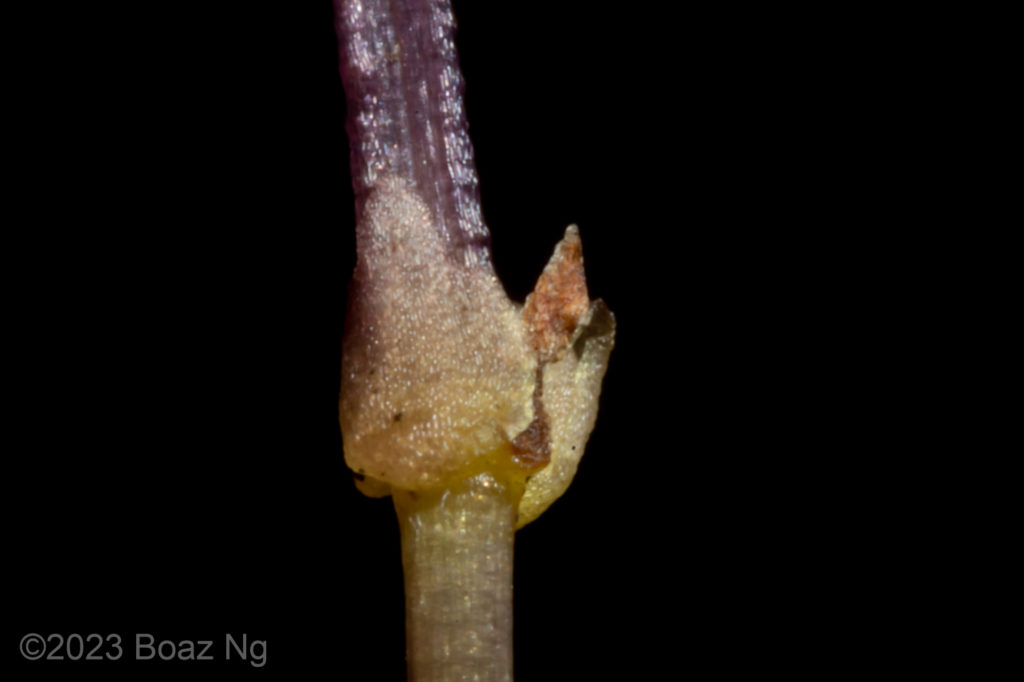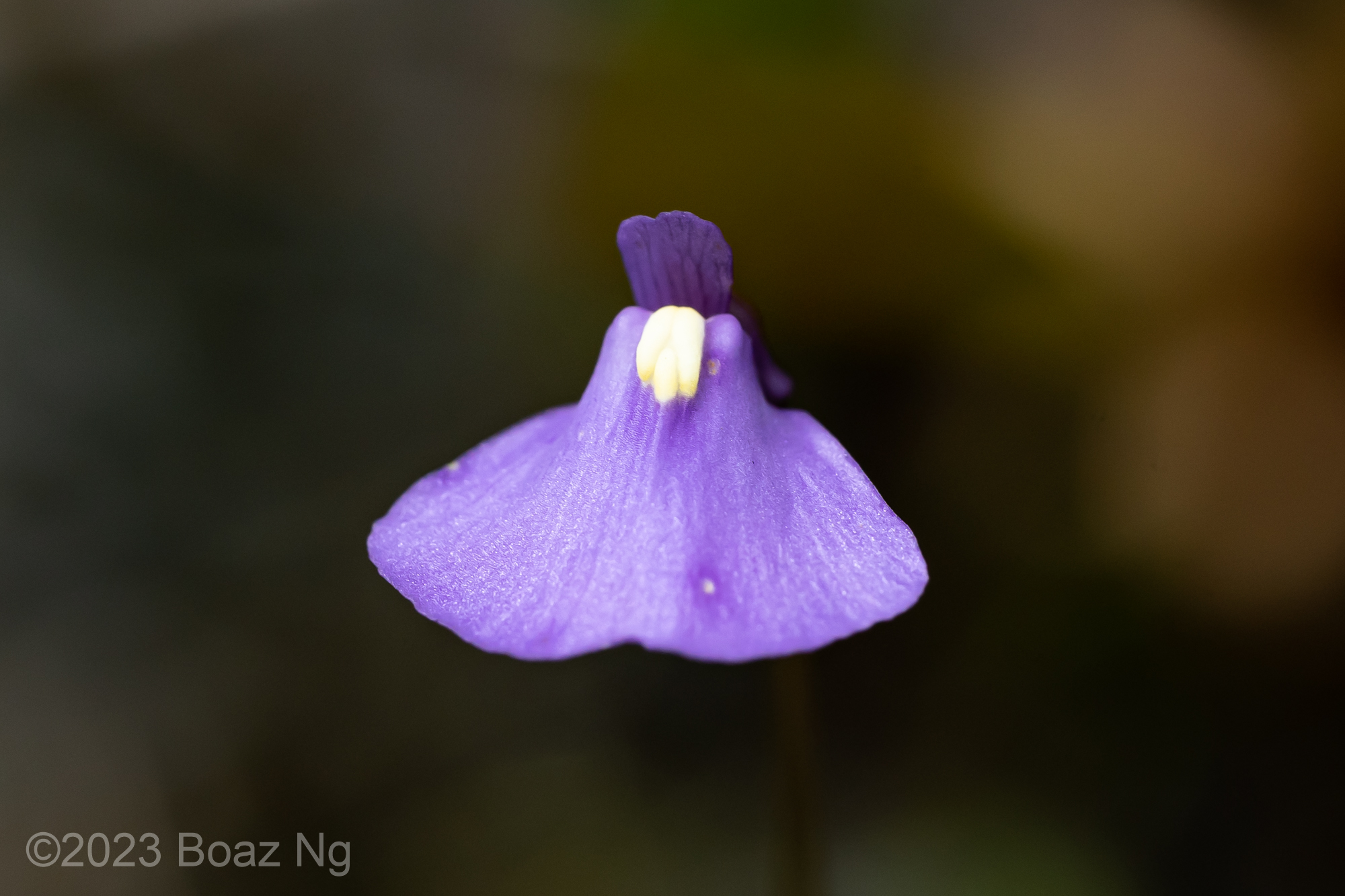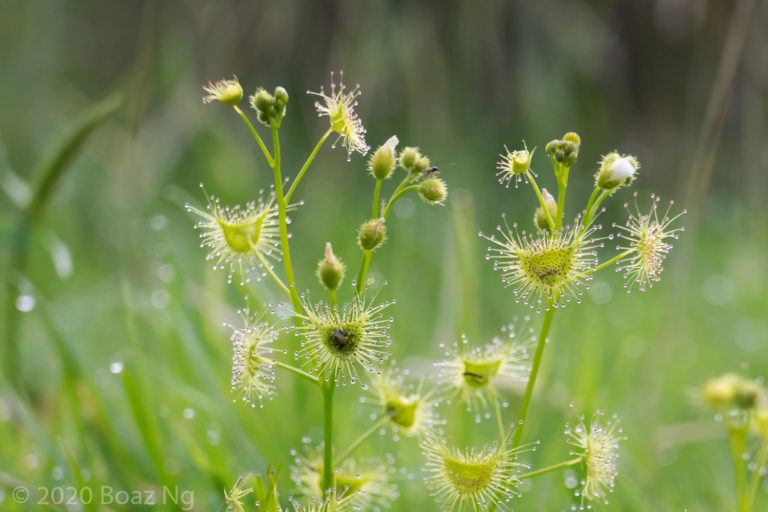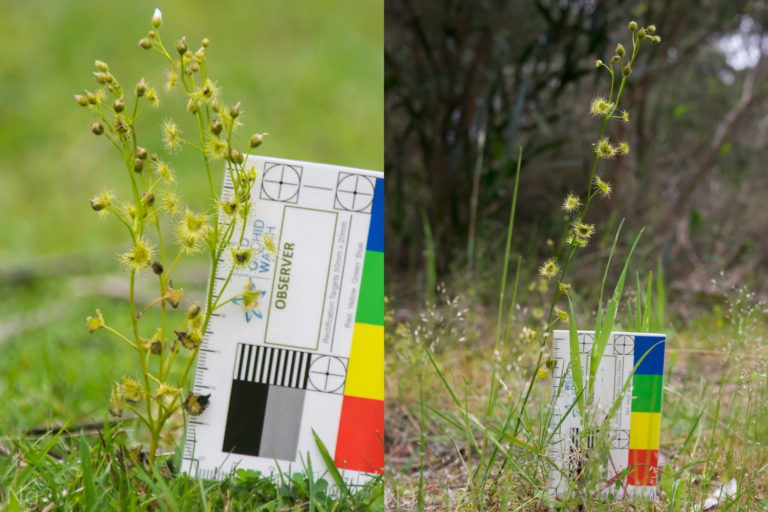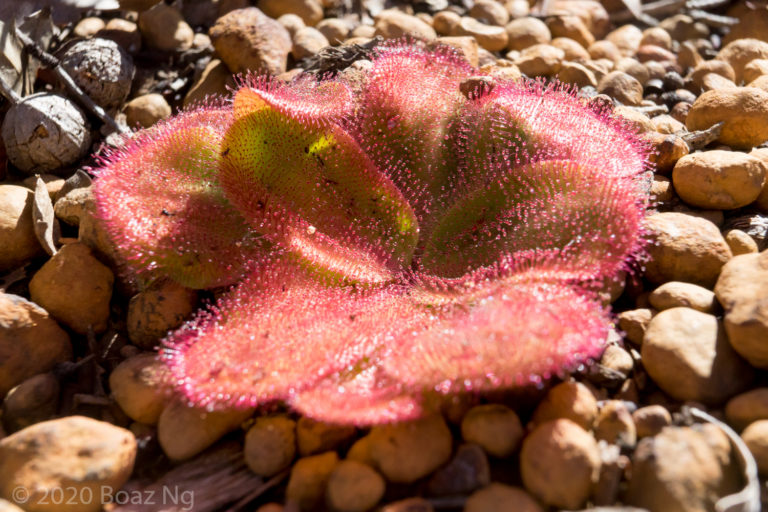Utricularia dichotoma subsp. oxleyensis is a taxon from the upland swamps near the Oxley Wild Rivers National Park region in NSW. It is probably the least observed of the subspecies delineated by Jobson & Baleeiro 2020.
Utricularia dichotoma subsp. oxleyensis has medium sized purple blooms that reach roughly 1-1.5 cm long. When viewed from the top down, the lower corolla lip is shaped like a fan/hatchet, with straight, outwards pointing sides connected in the middle by a curved edge. The nectary spur of the flower tends to be more or less straight and is slightly shorter than the lower corolla lip. The upper corolla lip is rounded or slightly notched. The bracts are broad, lack a prominent hump at the base, and have a short, rounded, downwards-pointing spur where it attaches to the stalk. The leaves are small and rounded. As with all members of the species complex, there is considerable baseline variability for all these features.
The subspecies is found in the Carrai Plateau and Ebor Region of NSW, Australia. It inhabits heathland swamps about 890-1500 m in altitude, where it grows terrestrially in moist, peaty substrates. The plants bloom in the warmer months.
Around Ebor, the subsp. oxleyensis is often sympatric with subsp. aquilonia. Personal observations in the region show plants with a range of intermediate morphologies that potentially indicate some degree of introgression. Subsp. oxleyensis differs from subsp. aquilonia in several generalised ways: oxleyensis has broad bracts that are non gibbous at the base and have a short downwards-pointing spur (aquilonia tends to have thinner and pointier bracts that are strongly gibbous at the base); oxleyensis has nectary spurs that are more or less straight (the nectary spurs of aquilonia are often curved); the lower corolla lip of oxleyensis is fan/hatchet shaped, with straight sides connected by a curved edge (the lower corolla lips of aquilonia are often somewhat trapezoid at the edge); oxleyensis seems to prefer terrestrial peat based substrates (aquilonia prefers somewhat sandier substrates or wetter niches within the landscape)
